For this night sky photography, I tried my best to capture the comet C/2022 E3 (ZTF) a few days before it is visible to the unaided eye. (Tuesday, Jan. 31 and Wednesday Feb. 1, 2023). Had to look really hard in the resulting images made. Found the little rascal and enhanced it a little for this shot. The half-moon helped with the foreground and took away a few of the stars.
Here’s the story.
Move Shoot Move Tracker
In order to get a longer exposure without the stars trailing, I employed a Move Shoot Move star tracker. Even though I’ve had this piece of kit for quite a while this was my first attempt at using it. In normal circumstances my camera and lens combination would show stars trailing after about seven seconds according to the NPF Rule. If I employed the “500 rule,” where you divide your lens, 14 mm (28mm full frame equivalent) in this case into 500 to find the time, 18 seconds would show slight star trails for micro 4/3rds format. That would translate to 36 seconds on a full frame sensor. I used Photopills APP to help calculate the time using the NPF rules which also takes into account the megapixels of your camera.
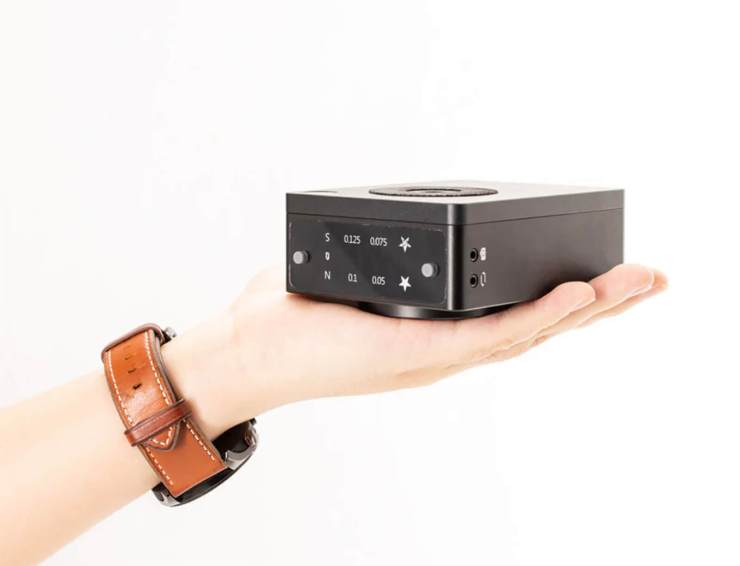
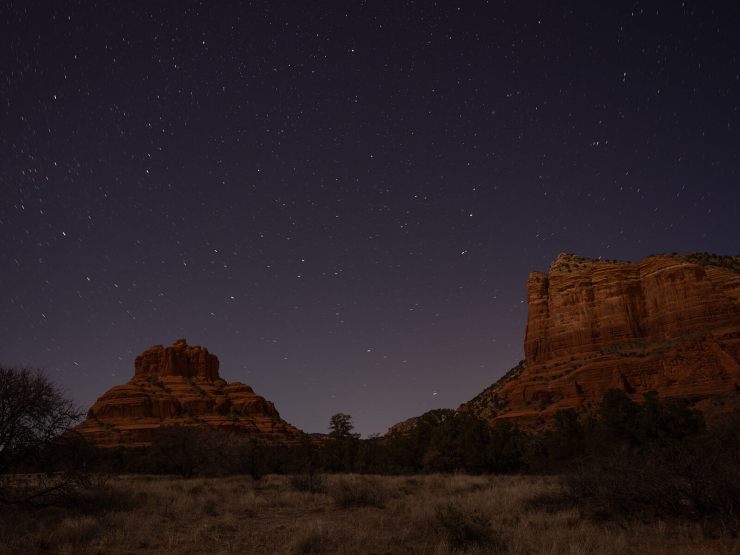
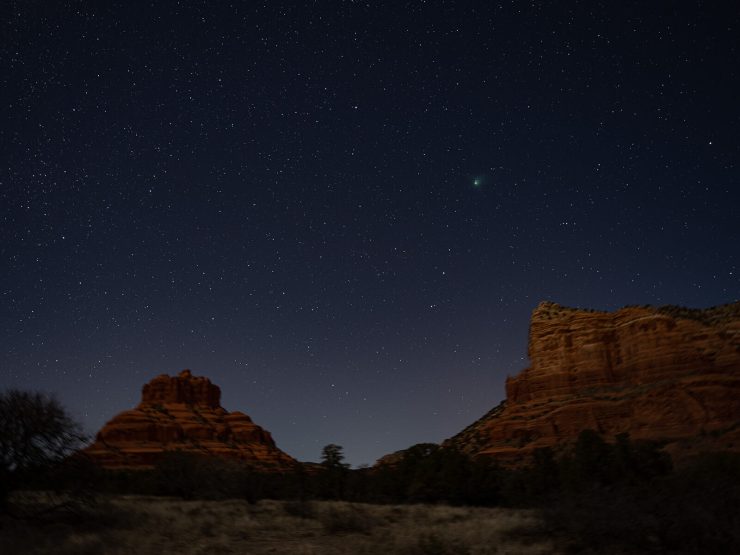
With the Move Shoot Move working I was able to attain two minute exposures with no visible star trailing. Longer exposure times are important because you can decrease the ISO or even stop down your lens which leads to less noise and coma in the final image with less processing time.
Moving land
When capturing images this way you need to create a blend. It’s necessary to combine two images as when the tracker is following the stars the foreground, which is not moving, shows a severe blur. After capturing your stars second exposure is made for the foreground. There was quite a bit of light being shed by the half-moon. Moonlight makes it a little tougher to see and photograph the night sky but the landscape becomes easier to capture.
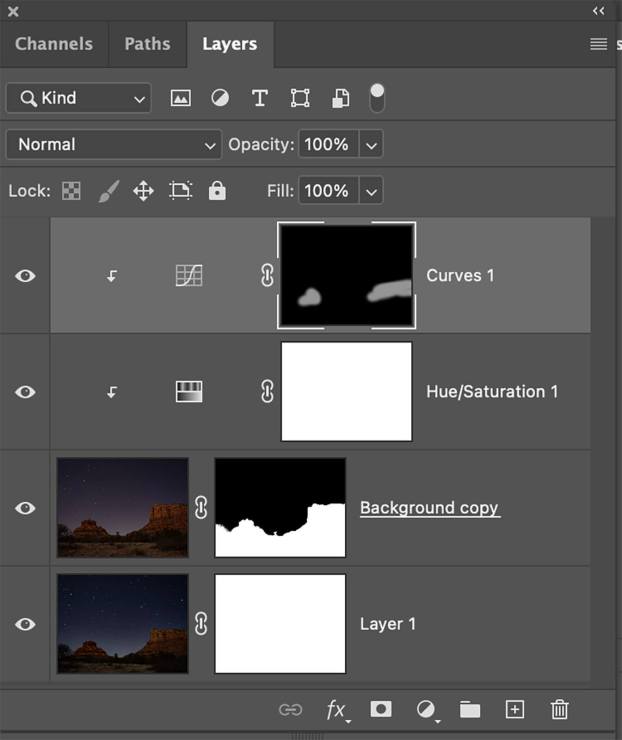
Adobe Photoshop
My processing was done with Adobe Photoshop. First stop is into Adobe Camera RAW (ACR) for overall adjustments. I expose to the right, ETTR, to make sure I am working with a higher number of pixels. You can check out my articles on ETTR and why it helps here.
After ACR processing, I extracted the foreground from the image exposed for the landscape and laid it over the image made for the sky. A little enhancement to bring out the comet and voila, done!
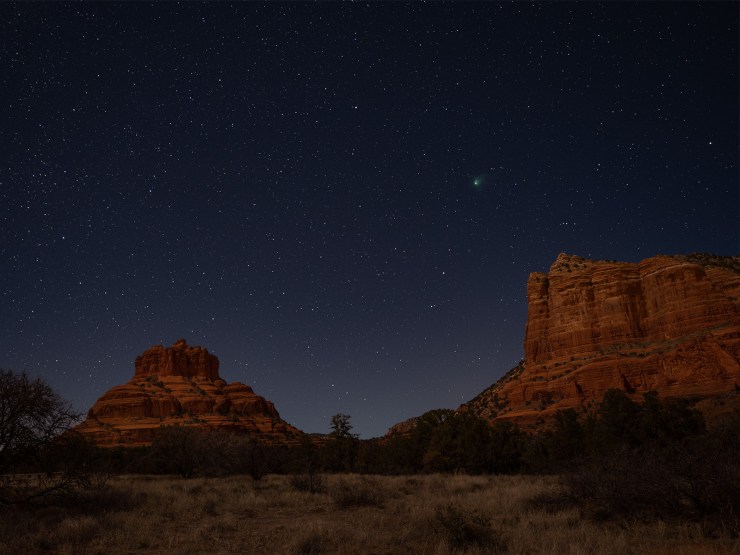
My Kit
Move Shoot Move star tracker, two Benro ball heads. You need one ball head on the tripod. The second ball head is mounted on the star tracker. Camera was Olympus OM-D E-M1 Mark III and the 7-14mm f/2.8 Pro M. Zukio lens. As it was a cold night I kept my hands warm with two Zippo Heat Bank 9s hand warmers. These rechargeable units are wonderful to keep your fingers functioning.
While I didn’t get a great image of the comet as I used a lens that was too wide and a little early for naked eye viewing the resulting image didn’t come out bad at all. Hopefully there will be a sequel to this article if the clouds part for a view of the sky on Wednesday!
Yours in Creative Photography, Bob
Tell your story with the second annual Visual Storytelling Conference!
Experience four days of interactive, online training sessions featuring a range of educational content with experienced photographers and content creators. This free event kicks off with a series of technical boot camps to build essential skills, followed by live, online sessions on photography, video, business and social media. Join live from March 10-13, 2022!
